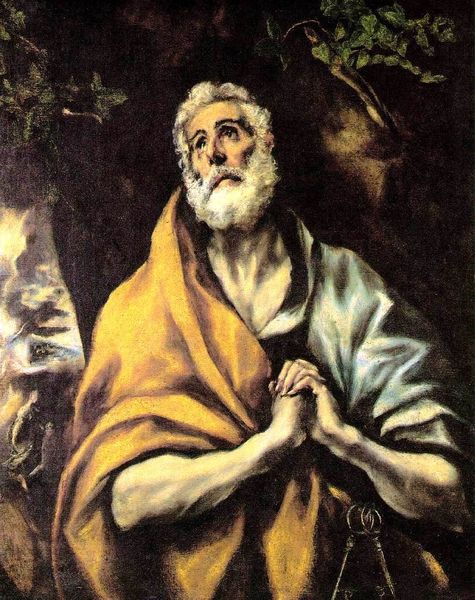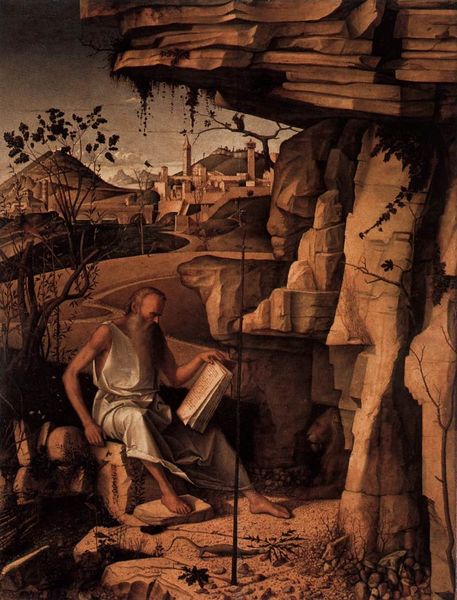
painting, oil-paint
#
portrait
#
painting
#
oil-paint
#
landscape
#
figuration
#
oil painting
#
genre-painting
#
history-painting
#
academic-art
#
italian-renaissance
#
early-renaissance
#
realism
Copyright: Public domain
Editor: This is Filippino Lippi's "Saint Jerome," painted around 1490. It's currently hanging in the Uffizi Gallery. The somber colors give it such a meditative feeling, but I am wondering, how would you interpret this work? Curator: Meditative is a lovely way to put it. I see a real push and pull here between earthly suffering and spiritual aspiration. Look at how Jerome's frail, aged body contrasts with the verdant, almost idealized landscape. Do you see that tension? Editor: Yes! The body looks so real, almost pained, while the background is calmer, even beautiful. Is that typical of the time? Curator: To some extent. Renaissance artists were fascinated by both the classical ideal and observed reality. Here, it's like Lippi's asking: where do we find the sacred? In denying the body, or acknowledging its place in a broader, God-given world? Note the placement of the crucifix just over Jerome's left shoulder; where else could such overt visual symbolism lead us in contemplation? Editor: So it's not just about a holy man, but also about our place in the world and how we find meaning. I guess I thought it was just a portrait, but now I see how much more is going on. Curator: Exactly! It’s about the quiet struggle to find transcendence in the everyday. Lippi's use of color— that muted palette— it's like he's painting a mood, not just a man. I hope it inspires the viewers, too, to reflect on their own journeys. Editor: I see that. Thank you for that new perspective. It makes this piece come alive.
Comments
No comments
Be the first to comment and join the conversation on the ultimate creative platform.













